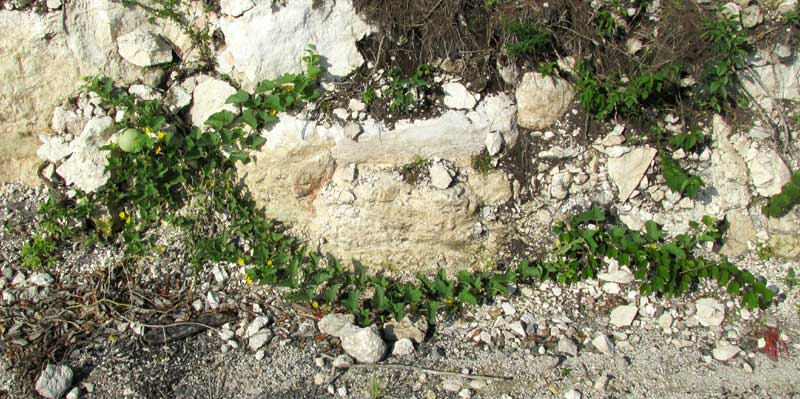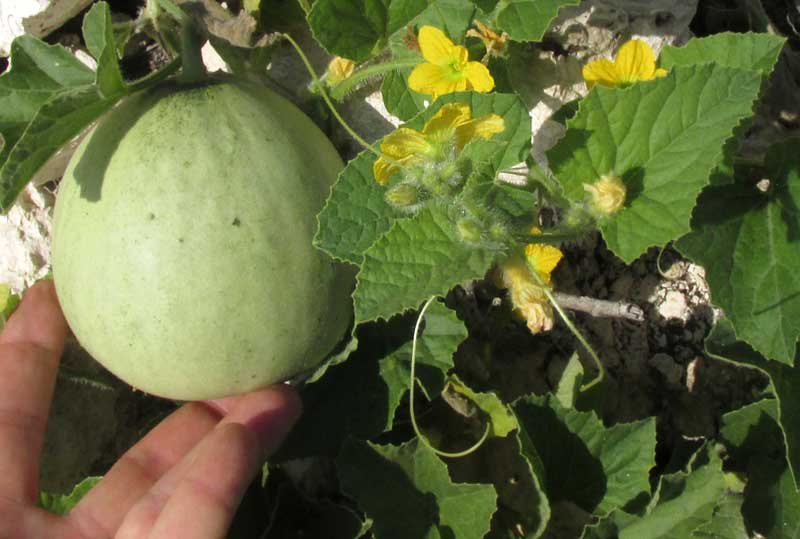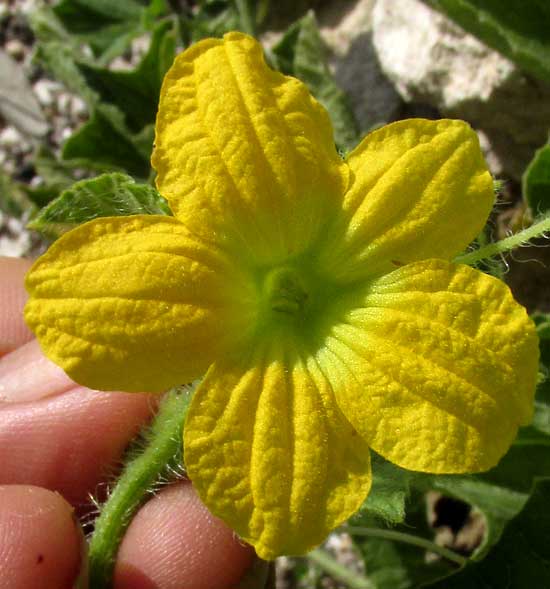Excerpts from Jim Conrad's
Naturalist Newsletter
from the July 10, 2016 Newsletter issued from Hacienda Chichen Resort beside Chichén Itzá Ruins; limestone bedrock; elevation ~39m (~128ft), N20.675°, W88.569°; central Yucatán state, MÉXICO
WILD MELON
During a bike trip down the highway between Chichén Itzá and the little town of Xcalacoop just to the east, a sprawling vine about 15ft long (4.5m) was spotted running along the base of a limestone roadcut, shown below:

Lots of vines trail alongside the road, even over that bare, sun-glaring limestone, but do you see the spherical fruit at the far left of the vine? A closer look is shown below:

It looks like an immature cantaloupe, or musk melon, and those leaves, yellow male flowers, and unbranched tendrils all agree with that assessment. A close-up of a unisexual male flower is shown below:

It's all just like a cantaloupe vine but, do cantaloupes "go wild" to the extent that they can flourish in such a seemingly inhospitable spot as this?
After "doing the botany," I found that it was indeed a cantaloupe, the field mark not least important being that the fruit was spherical with a hairy but not spiny covering, and even in its immature state, so large. So, yes, it's CUCUMIS MELO, the melon, of which any number of tasty and variously looking cultivars have been developed.
Also I read that melon vines do indeed sometimes "go wild," especially in tropical and semi-tropical environments, and even in the Americas, though the original stock seems to have been from Asia. Still, finding this melon thriving in such a seemingly hostile environment, I can't avoid remembering certain of my garden cantaloupes who just withered and died, no matter how I pampered them.